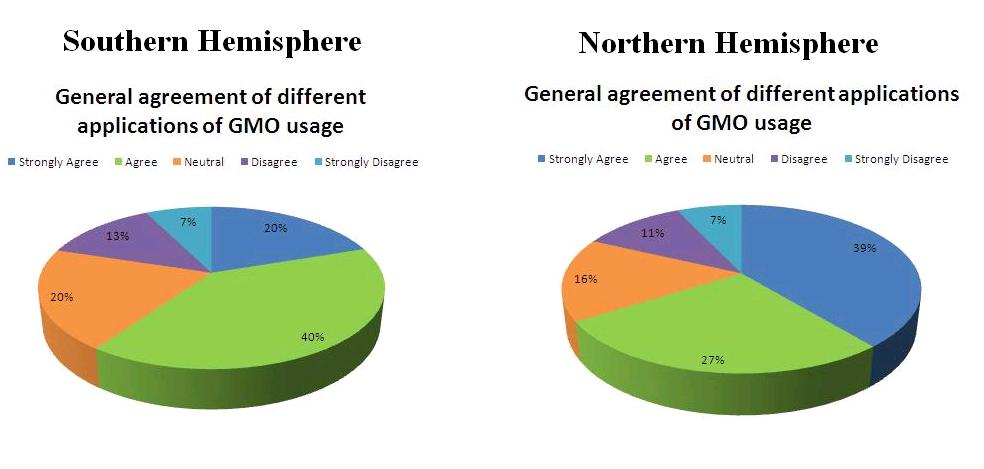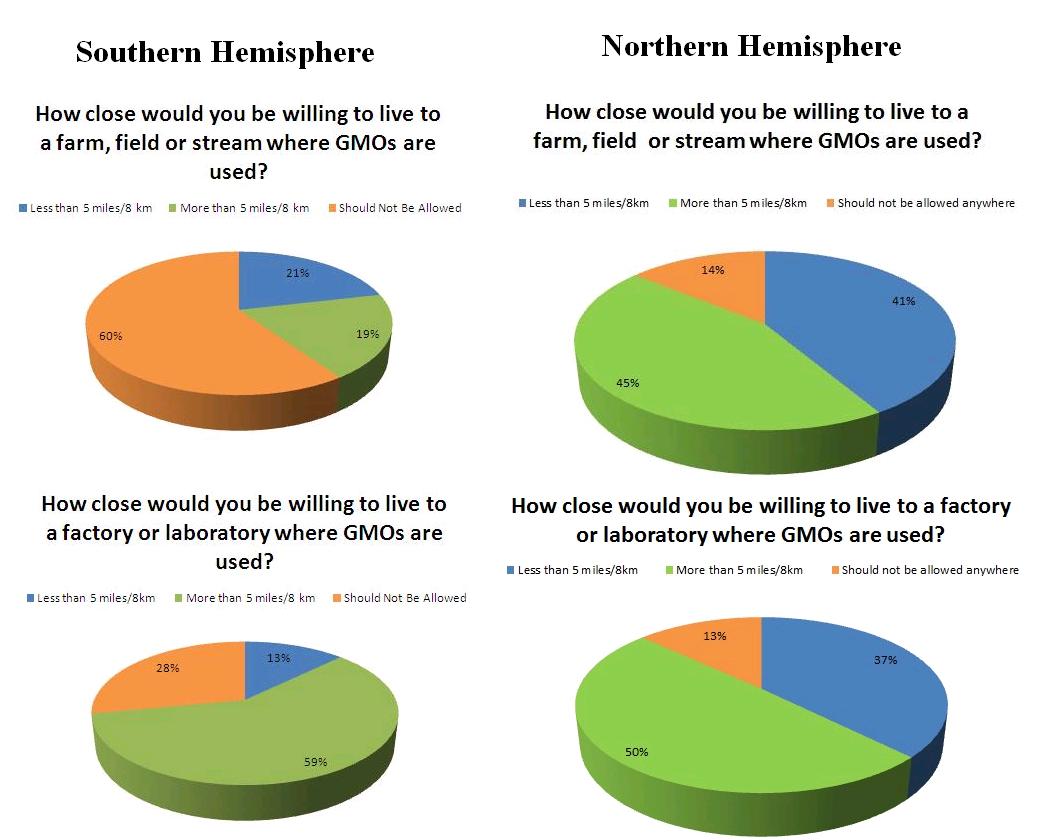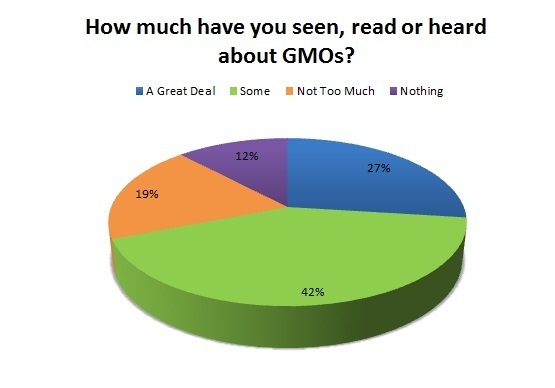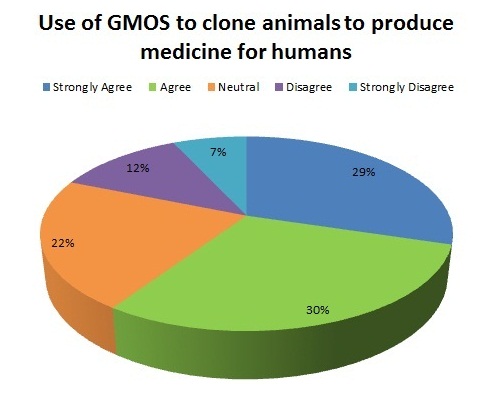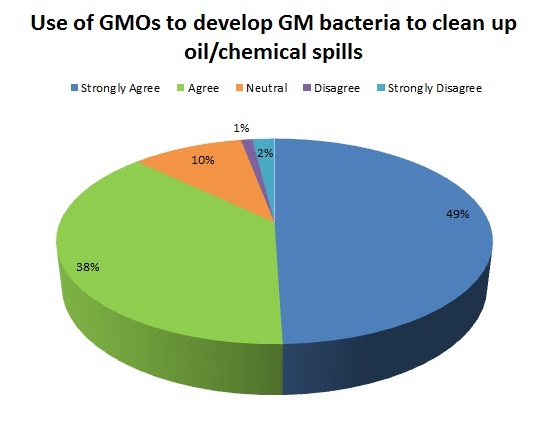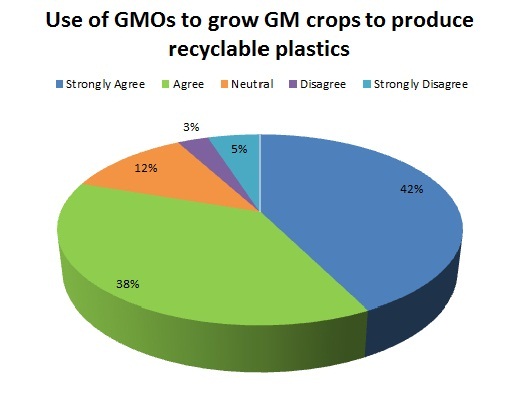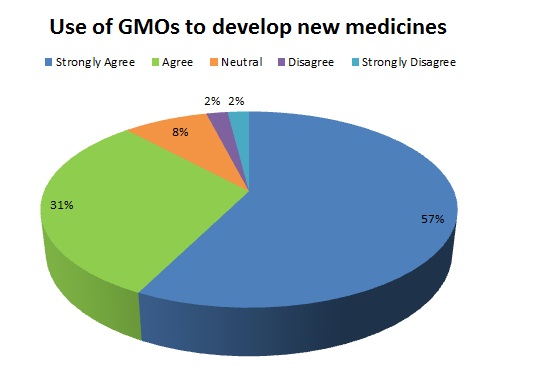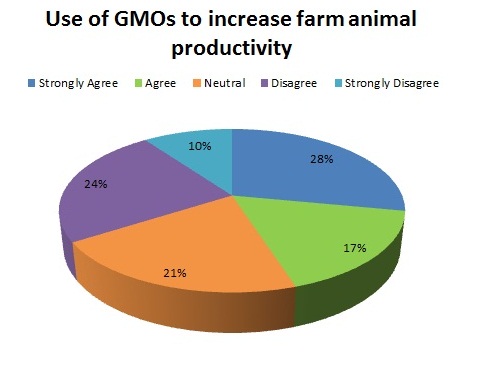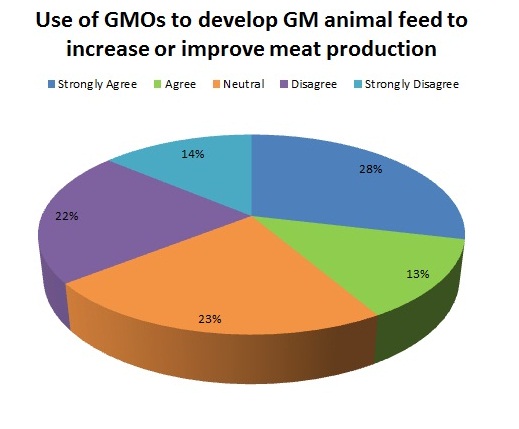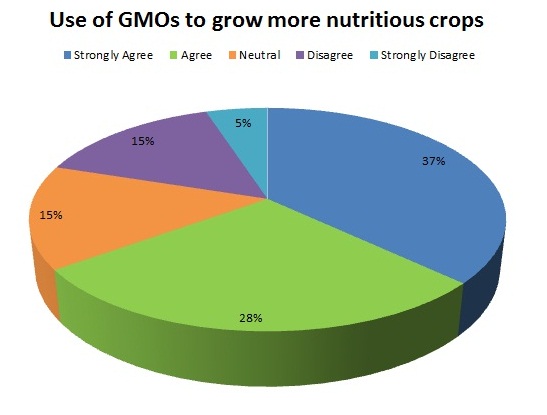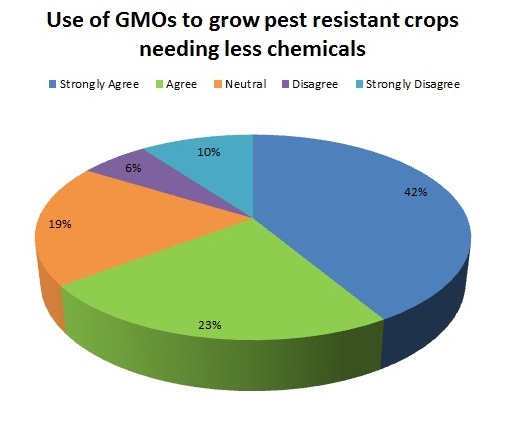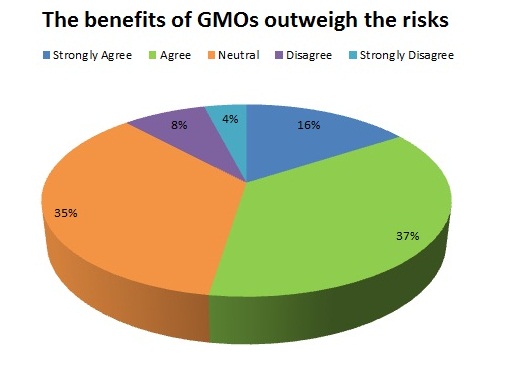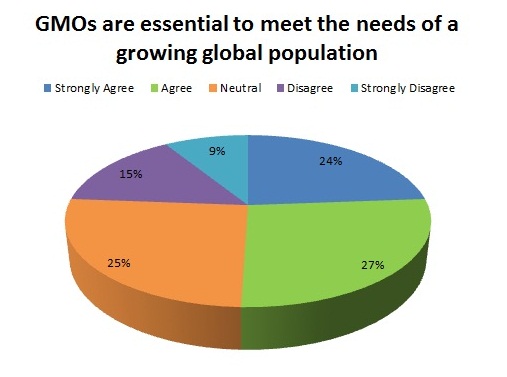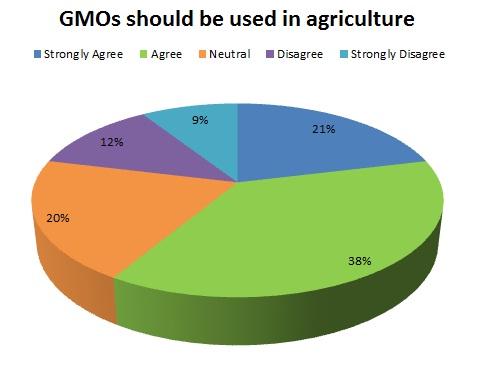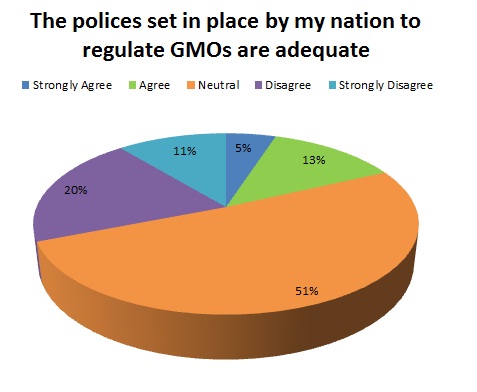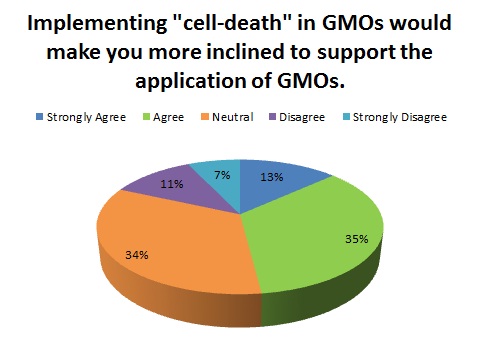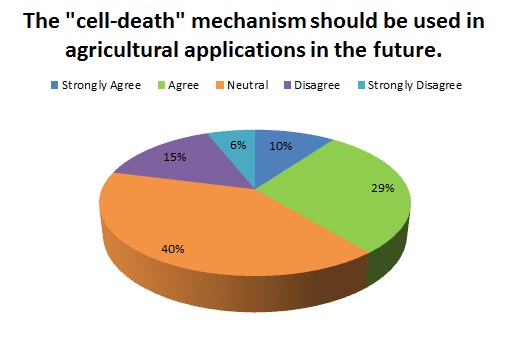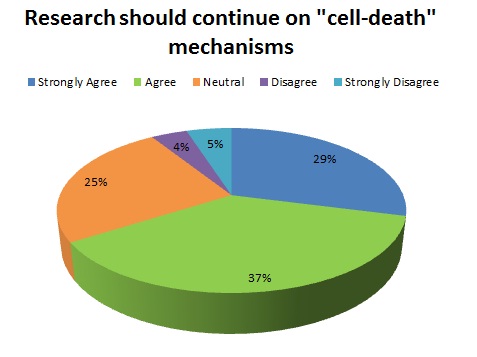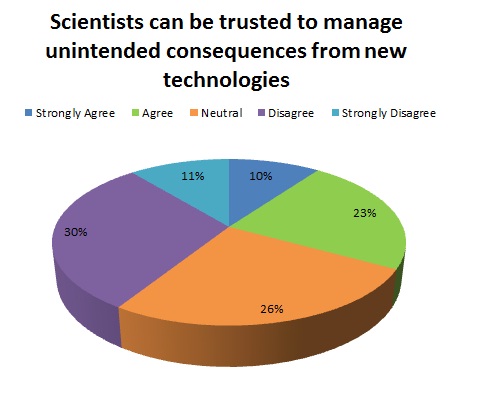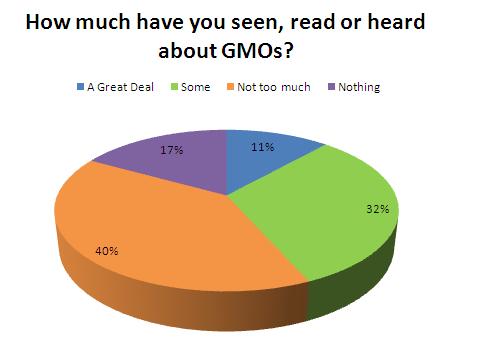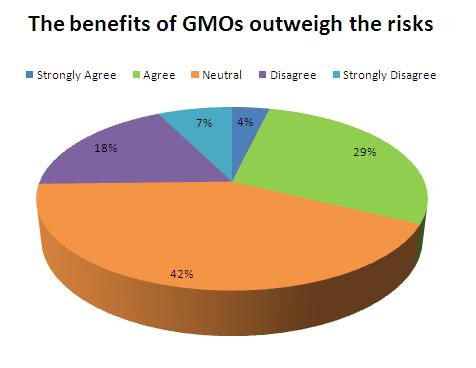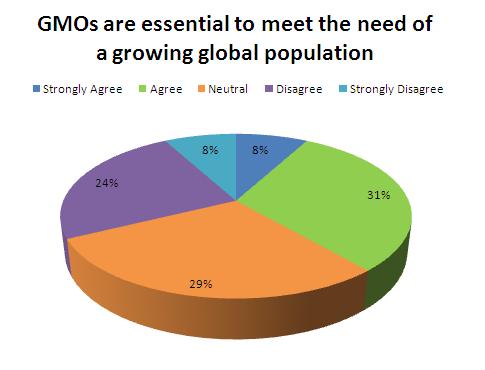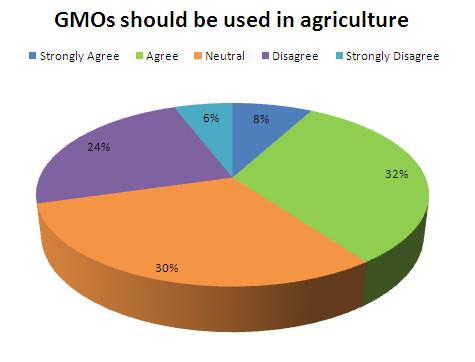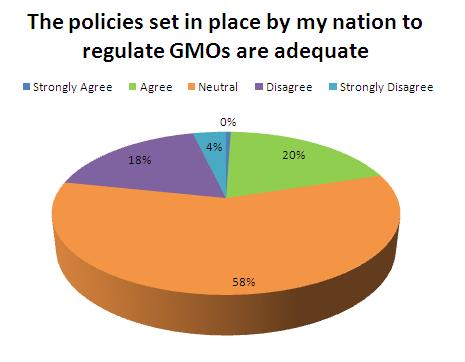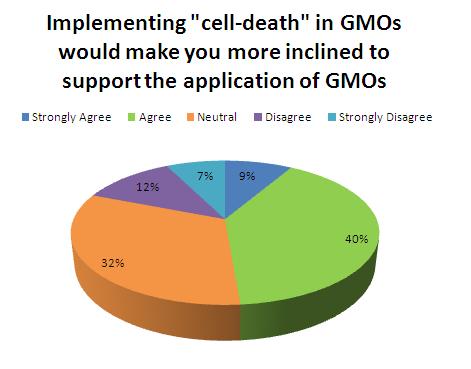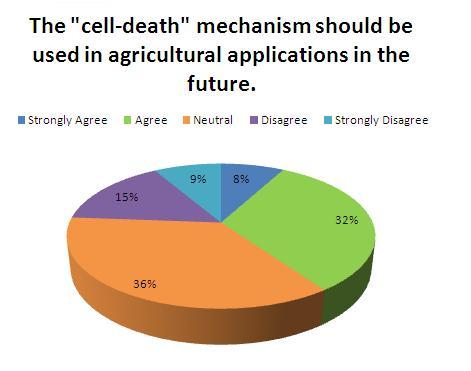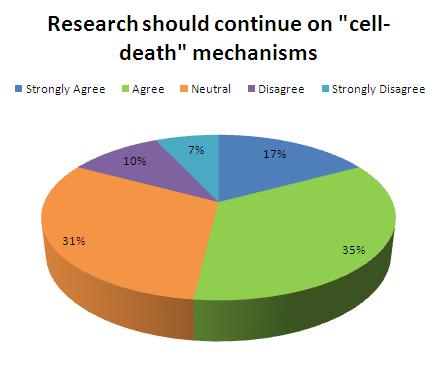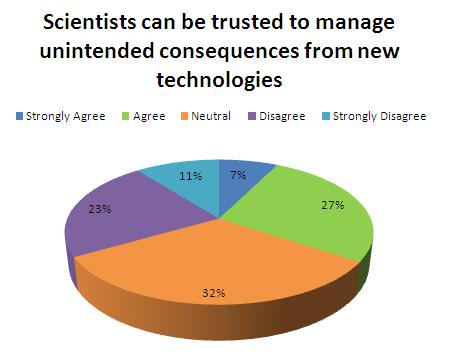Team:Penn State/Human Practices
From 2010.igem.org
(→Question Specific Results) |
(→Demographics) |
||
| (47 intermediate revisions not shown) | |||
| Line 23: | Line 23: | ||
==Penn State iGEM 2010== | ==Penn State iGEM 2010== | ||
| - | This year, Penn State iGEM created a survey about Genetically Modified Organisms(GMOs) in Agriculture. The survey included questions about where and when GMOs should be used, GMOs containing a "cell-death" mechanism, and other questions dealing with the use of GMOs. For this survey, we decided we wanted to get a random sample of college-aged students from around the world. All of the other iGEM teams were contacted and asked to participate in sending our survey to a group of random students from their respective schools. In order to distribute the survey to their schools, the iGEM teams were asked to undergo training required by their school or country necessary to distribute surveys. Of all of the teams, the University of British Columbia, Georgia Tech, Harvard, RMIT Australia, USTC and USTC Software, Uppsala University, The Citadel, and UCSF showed interest in helping us distribute our survey. Unfortunately, mosts schools received few responses, with the University of British Columbia having one, Georgia Tech having none, Harvard four, USTC and USTC Software seven, Uppsala University none, The Citadel one, and UCSF nine. In addition, four were listed as other, which we believe were from UCSF. We believe that they misunderstood our intentions of the survey and instead of distributing the survey to other members of their university, they took it themselves. RMIT Australia did receive permission from their ethics committee to distribute the survey to random students at their school and collected 191 responses for us. Unfortunately, we were not able to gather their responses in time to include in our survey analysis, | + | This year, Penn State iGEM created a survey about Genetically Modified Organisms(GMOs) in Agriculture. The survey included questions about where and when GMOs should be used, GMOs containing a "cell-death" mechanism, and other questions dealing with the use of GMOs. For this survey, we decided we wanted to get a random sample of college-aged students from around the world. All of the other iGEM teams were contacted and asked to participate in sending our survey to a group of random students from their respective schools. In order to distribute the survey to their schools, the iGEM teams were asked to undergo training required by their school or country necessary to distribute surveys. Of all of the teams, the University of British Columbia, Georgia Tech, Harvard, RMIT Australia, USTC and USTC Software, Uppsala University, The Citadel, and UCSF showed interest in helping us distribute our survey. Unfortunately, mosts schools received few responses, with the University of British Columbia having one, Georgia Tech having none, Harvard four, USTC and USTC Software seven, Uppsala University none, The Citadel one, and UCSF nine. In addition, four were listed as other, which we believe were from UCSF. We believe that they misunderstood our intentions of the survey and instead of distributing the survey to other members of their university, they took it themselves. '''RMIT Australia''' did receive permission from their ethics committee to distribute the survey to random students at their school and collected 191 responses for us. Unfortunately, we were not able to gather their responses in time to include in our survey analysis, so we listed their results separately. We really appreciative their cooperation and willingness to help and collaborate with us! They did an amazing job! |
| - | == | + | |
| + | Our results are presented as the Northern Hemisphere (comprised of mostly the United States) and the Southern Hemisphere (comprised of solely Australia). | ||
| + | |||
| + | |||
| + | In order for our team to create and distribute the survey, training by the Institutional Review Board was necessary. Documentation of the students who worked on the survey can be found on our [[Team:Penn State/Safety|safety page]]. | ||
| + | |||
| + | ==Northern Hemisphere Results== | ||
Overall, we were able to gather a broad array of information that can be portrayed to show the general beliefs of college aged students on the principles of GMOs, research involving genetic engineering, and the use of a "cell-death" mechanism to be implemented in bacteria. | Overall, we were able to gather a broad array of information that can be portrayed to show the general beliefs of college aged students on the principles of GMOs, research involving genetic engineering, and the use of a "cell-death" mechanism to be implemented in bacteria. | ||
| - | ==Significant Results== | + | ===Significant Results=== |
| - | + | ||
| + | * A person who trusts their nation's policies and regulations is more likely to be accepting of GMOs. | ||
| - | + | * A person who trusts scientists is more likely to be accepting of GMOs. | |
| + | * A person who supports the use of GMOs is more likely to support "cell-death" mechanisms | ||
| - | |||
| + | [[Tables of cross-tabulations and chi-squares of some prominent factors which showed great significance]] | ||
| - | |||
| - | == | + | ===Less Significant Results=== |
| - | + | * A person's home location has some effect on certain GMO applications. | |
| + | |||
| + | * A person's major study area has some effect on certain GMO applications. | ||
| + | **One example of this was that science and engineering students tended to have a greater acceptance of the applications of GMOs than those of other majors. | ||
| + | |||
| + | ==Comparison== | ||
| + | As compared to the results of the respondents from the Northern Hemisphere, the Southern Hemisphere had similar opinions of GMOs. Both places had a large amount of respondents who were supportive of the use of GMOs in different applications. | ||
| + | |||
| + | [[Image:comparison_1.JPG|800px]] | ||
| + | |||
| + | |||
| + | A significant difference between the Northern and Southern Hemispheres was the proximity in which the person would like to live near an area where GMOs are used. As depicted below, those students of the Southern Hemisphere have a greater dislike of GMOs being used in a farm, field or stream than those students in the Northern Hemisphere. Both sets of students have similar acceptance of GMOs used in a factory or laboratory, but would not necessarily want to live close to them. The difference in opinions between the two geographical groups of respondents on the acceptance of GMOs used in a farm, field or stream is striking; this difference was not expected. It would be an interesting study to collect more data and point out the factors that cause the students from the Northern Hemisphere to have such differing views from those of the Southern Hemisphere pertaining to GMO proximity. | ||
| + | |||
| + | [[Image:comparison_2.JPG|900px]] | ||
| + | |||
| + | ==Northern Hemisphere Specific Question Results== | ||
[[Image:survey_question_1.jpg|400px]] | [[Image:survey_question_1.jpg|400px]] | ||
| Line 57: | Line 78: | ||
[[Image:survey_question_12.jpg|400px]] | [[Image:survey_question_12.jpg|400px]] | ||
[[Image:survey_question_13.jpg|400px]] | [[Image:survey_question_13.jpg|400px]] | ||
| - | |||
| - | |||
[[Image:survey_question_16.jpg|400px]] | [[Image:survey_question_16.jpg|400px]] | ||
[[Image:survey_question_17.jpg|400px]] | [[Image:survey_question_17.jpg|400px]] | ||
[[Image:survey_question_18.jpg|400px]] | [[Image:survey_question_18.jpg|400px]] | ||
[[Image:survey_question_19.jpg|400px]] | [[Image:survey_question_19.jpg|400px]] | ||
| - | |||
| - | |||
| - | |||
| - | |||
| - | |||
| - | == | + | ===Demographic Results=== |
| - | [[ | + | [[Demograhic Results]] |
| - | [[Image: | + | |
| + | ==Southern Hemisphere Specific Question Results== | ||
| + | |||
| + | [[Image:Australia_survey_1.JPG|400px]] | ||
[[Image:Australia_survey_3.JPG|400px]] | [[Image:Australia_survey_3.JPG|400px]] | ||
[[Image:Australia_survey_4.JPG|400px]] | [[Image:Australia_survey_4.JPG|400px]] | ||
[[Image:Australia_survey_5.JPG|400px]] | [[Image:Australia_survey_5.JPG|400px]] | ||
[[Image:Australia_survey_6.JPG|400px]] | [[Image:Australia_survey_6.JPG|400px]] | ||
| - | |||
| - | |||
[[Image:Australia_survey_9.JPG|400px]] | [[Image:Australia_survey_9.JPG|400px]] | ||
[[Image:Australia_survey_10.JPG|400px]] | [[Image:Australia_survey_10.JPG|400px]] | ||
[[Image:Australia_survey_11.JPG|400px]] | [[Image:Australia_survey_11.JPG|400px]] | ||
[[Image:Australia_survey_12.JPG|400px]] | [[Image:Australia_survey_12.JPG|400px]] | ||
| - | + | ||
| - | + | ||
| - | + | ||
| - | [[ | + | ===Demographic Results=== |
| + | [[Demographics]] | ||
Latest revision as of 02:50, 28 October 2010
| Home | Team | Official Team Profile | Project | Parts Submitted to the Registry | Notebook | Human Practices | Safety | Sponsors |
|---|
Contents |
Penn State iGEM 2010
This year, Penn State iGEM created a survey about Genetically Modified Organisms(GMOs) in Agriculture. The survey included questions about where and when GMOs should be used, GMOs containing a "cell-death" mechanism, and other questions dealing with the use of GMOs. For this survey, we decided we wanted to get a random sample of college-aged students from around the world. All of the other iGEM teams were contacted and asked to participate in sending our survey to a group of random students from their respective schools. In order to distribute the survey to their schools, the iGEM teams were asked to undergo training required by their school or country necessary to distribute surveys. Of all of the teams, the University of British Columbia, Georgia Tech, Harvard, RMIT Australia, USTC and USTC Software, Uppsala University, The Citadel, and UCSF showed interest in helping us distribute our survey. Unfortunately, mosts schools received few responses, with the University of British Columbia having one, Georgia Tech having none, Harvard four, USTC and USTC Software seven, Uppsala University none, The Citadel one, and UCSF nine. In addition, four were listed as other, which we believe were from UCSF. We believe that they misunderstood our intentions of the survey and instead of distributing the survey to other members of their university, they took it themselves. RMIT Australia did receive permission from their ethics committee to distribute the survey to random students at their school and collected 191 responses for us. Unfortunately, we were not able to gather their responses in time to include in our survey analysis, so we listed their results separately. We really appreciative their cooperation and willingness to help and collaborate with us! They did an amazing job!
Our results are presented as the Northern Hemisphere (comprised of mostly the United States) and the Southern Hemisphere (comprised of solely Australia).
In order for our team to create and distribute the survey, training by the Institutional Review Board was necessary. Documentation of the students who worked on the survey can be found on our safety page.
Northern Hemisphere Results
Overall, we were able to gather a broad array of information that can be portrayed to show the general beliefs of college aged students on the principles of GMOs, research involving genetic engineering, and the use of a "cell-death" mechanism to be implemented in bacteria.
Significant Results
- A person who trusts their nation's policies and regulations is more likely to be accepting of GMOs.
- A person who trusts scientists is more likely to be accepting of GMOs.
- A person who supports the use of GMOs is more likely to support "cell-death" mechanisms
Less Significant Results
- A person's home location has some effect on certain GMO applications.
- A person's major study area has some effect on certain GMO applications.
- One example of this was that science and engineering students tended to have a greater acceptance of the applications of GMOs than those of other majors.
Comparison
As compared to the results of the respondents from the Northern Hemisphere, the Southern Hemisphere had similar opinions of GMOs. Both places had a large amount of respondents who were supportive of the use of GMOs in different applications.
A significant difference between the Northern and Southern Hemispheres was the proximity in which the person would like to live near an area where GMOs are used. As depicted below, those students of the Southern Hemisphere have a greater dislike of GMOs being used in a farm, field or stream than those students in the Northern Hemisphere. Both sets of students have similar acceptance of GMOs used in a factory or laboratory, but would not necessarily want to live close to them. The difference in opinions between the two geographical groups of respondents on the acceptance of GMOs used in a farm, field or stream is striking; this difference was not expected. It would be an interesting study to collect more data and point out the factors that cause the students from the Northern Hemisphere to have such differing views from those of the Southern Hemisphere pertaining to GMO proximity.
Northern Hemisphere Specific Question Results
Demographic Results
Southern Hemisphere Specific Question Results
 "
"
